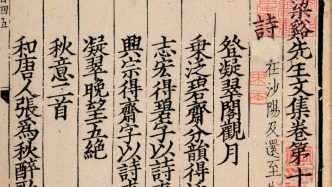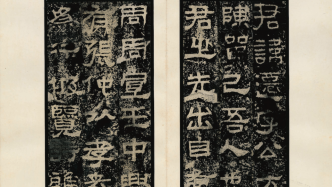
The Shanghai Library is one of the most important public collections of tablets and inscriptions at home and abroad, with a collection of 250,000 epigraphic rubbings, including 3,000 rare books. The Paper has learned that as the Shanghai Library’s major annual exhibition, “The Heroes of the Han Dynasty—Exhibition of Rare Books on Han Steles Collected by the Shanghai Library” will kick off at the end of October in the first exhibition hall of the East Building of the Shanghai Library. This exhibition selects 90 rare and rare books from the collection of Han Dynasty inscriptions, including tablets, stele tablets, cliffs, stone monuments, portraits and inscriptions, etc. About 80% of them meet the national first- and second-level cultural relic standards, and they are all on display for the first time. .
It is reported that this exhibition is the first at home and abroad to focus on rare Han stele rubbings, and it is also the highest cultural relic exhibition of Han stele rubbings to date. It includes the finest steles from the Han Dynasty, such as "Yi Ying", "Ritual Vessels", "Kong Zhou", "Shi Chen", "Cao Quan", "Zhang Qian" and other famous steles, as well as the famous remote cliff "Ode to the West". "Ode to the Stone Gate", "Ode to the Ying Pavilion", "Liu Pingguo Cliff", etc.
As one of the most important public collections of inscriptions and inscriptions at home and abroad, the Shanghai Library has a collection of 250,000 epigraphic and stone rubbings, including 3,000 rare books. There are a large number of Han stele rubbings, accounting for about 20% of the total number of stele rubbings in the entire collection. Zhong Wei, a research librarian at the Shanghai Library, told The Paper that showing the complete variety of Han stele and the richness of the collection of rubbings is not the main purpose of the exhibition; it is to show the preciousness and scarcity of the Han stele rubbings in the collection and the unique cultural connotation of rare books of inscriptions. This is their biggest wish for hosting this exhibition.
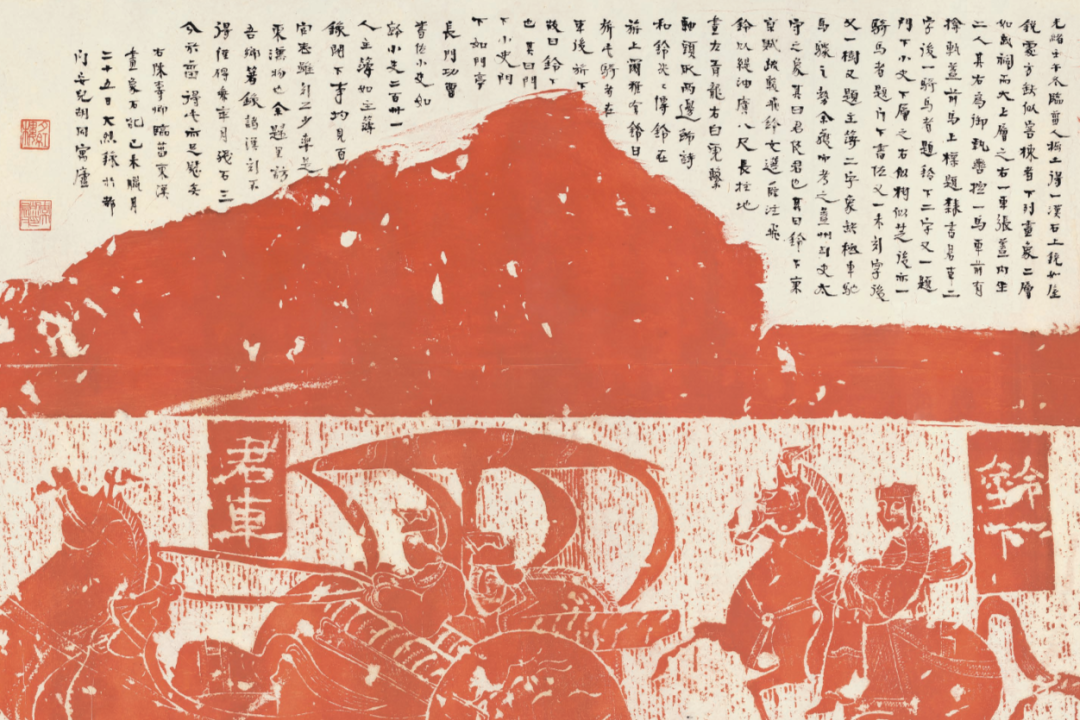
The Portrait of Jun Che and the Yin (Postscript of Zhou Dalie)
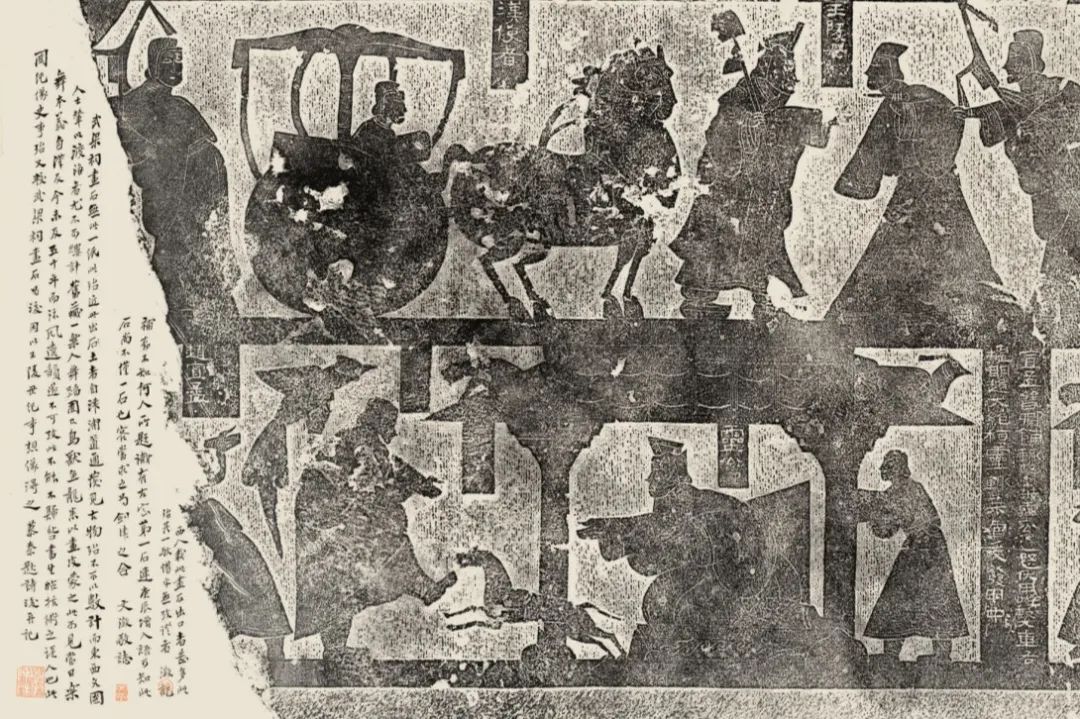
Portrait Stone of Wang Lingmu (with postscript)
In recent years, the Shanghai Library has devoted itself to the compilation and research, publication and exhibition, and publicity of inscriptions. Following the 2019 "Colorful Ink and Stone Drums - New Year Exhibition of Rare Books on Stone Drums" and the 2021 "Atmosphere of the Tang Dynasty - Exhibition of Rare Books on Tang Steles from the Shanghai Library", this year's "The Magnificent Style of the Han Dynasty - Rare Books from the Shanghai Library" was launched Exhibition of Rare Books on Han Monuments". This exhibition is the first at home and abroad to focus on rare Han stele rubbings. It is also the highest cultural relics exhibition to date on Han stele rubbings.

General Liu Pingguo of Kucha left on the cliff
The stone carvings of the Han Dynasty, whether they are monuments or cliff inscriptions, cover the politics, economy, education, religion, literature, art, and social customs of the Han Dynasty, forming a cultural museum of the Han Dynasty. The rubbings of inscriptions and inscriptions have been collected, framed, inscribed and viewed by famous artists, leaving a broader and deeper cultural connotation for future generations.

Monument of Cao Quan (version collected by Yu Fu)

Monument of Cao Quan (version collected by Yu Fu)
According to information provided by the Historical Documentation Center of the Shanghai Library, this exhibition includes the finest steles from the Han Dynasty, such as "Yi Ying", "Liuqi", "Kong Zhou", "Shi Chen", "Cao Quan", "Zhang Qian" and other famous steles , and also selected famous remote cliff cliffs such as "Ode to the West", "Ode to the Stone Gate", "Ode to the Yige", "Liu Pingguo Cliff", etc. These exhibits benefited from more than 30 years of basic compilation and research discoveries, and were collected from thousands of pieces. The rare books on inscriptions and inscriptions are carefully selected, including rare mounted volumes and high-quality scrolls, which not only reflect the value of epigraphic research but also have the value of artistic appreciation, thus comprehensively demonstrating the complete range, richness and exquisiteness of the collection of inscriptions and inscriptions in the museum.

The stele of Zhang Qian is attached to the Yin (a copy given to him by the Chiang family for collection in the library).
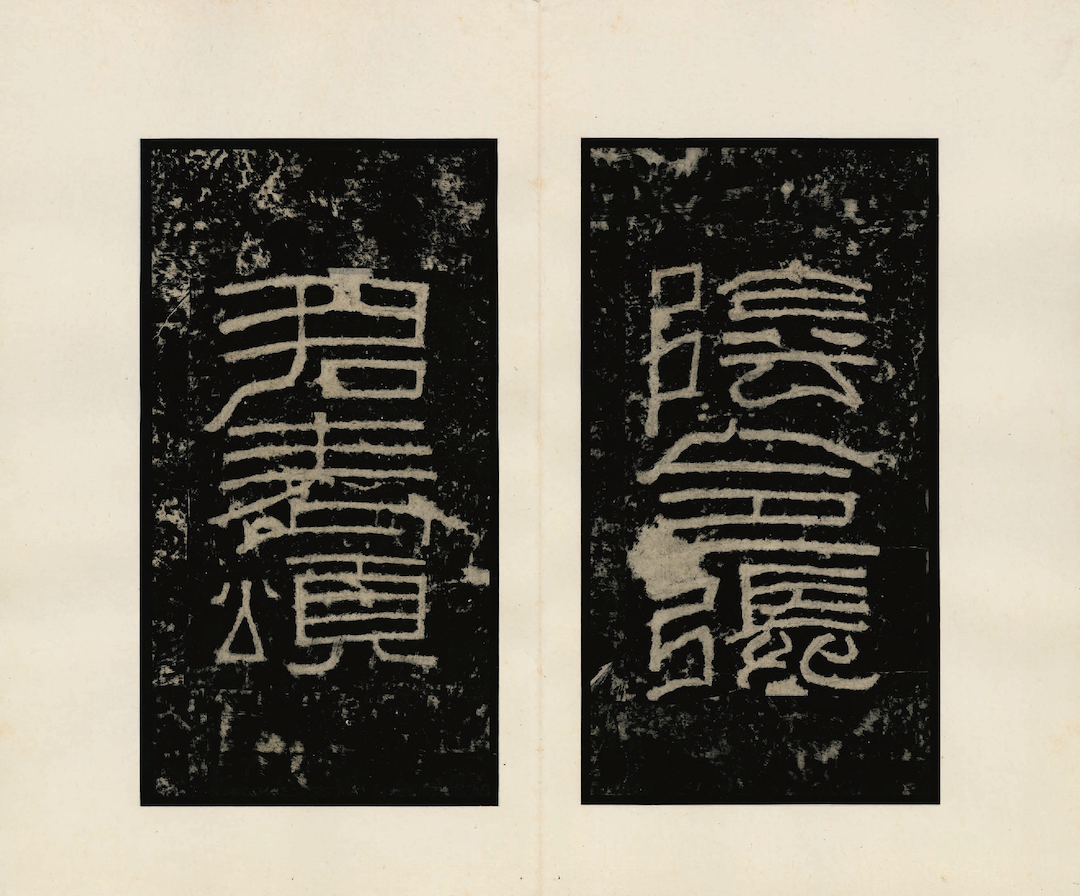
The stele of Zhang Qian is attached to the Yin (a copy given to him by the Chiang family for collection in the library).
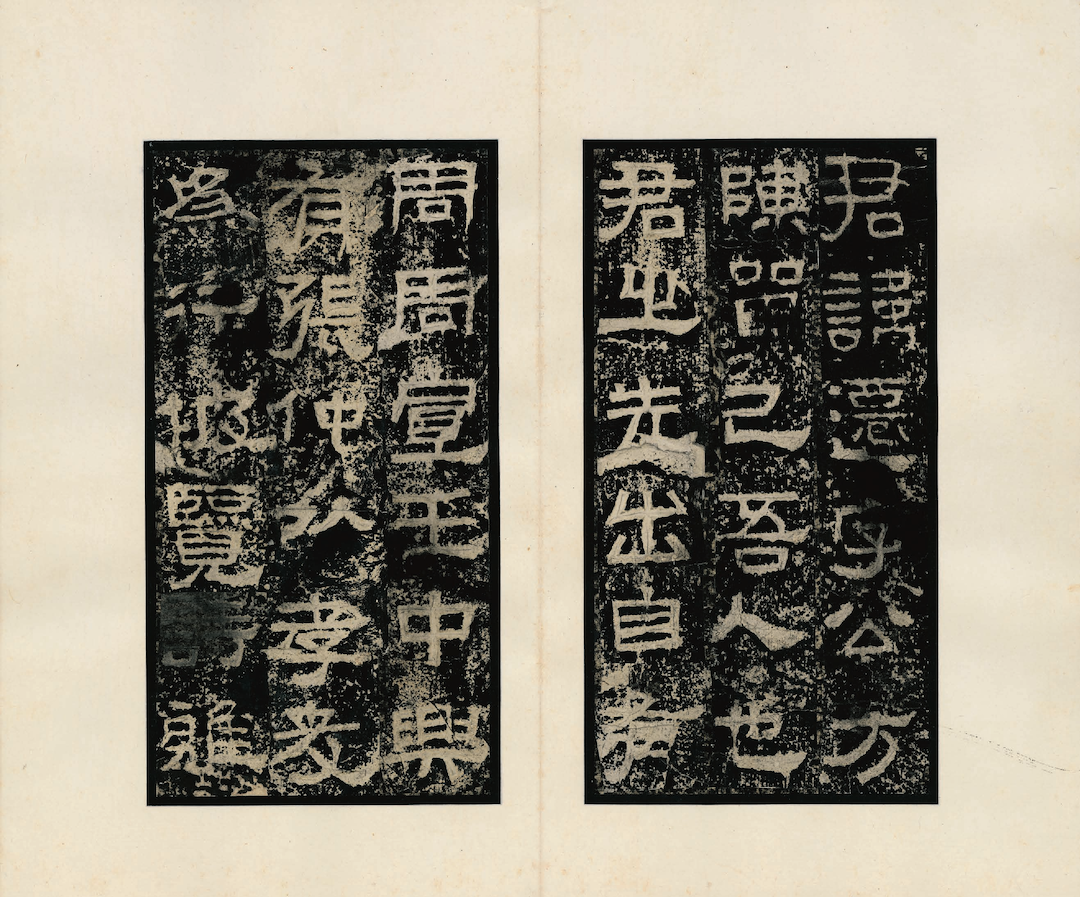
The stele of Zhang Qian is attached to the Yin (a copy given to him by the Chiang family for collection in the library).
"When we choose Han Dynasty stele exhibits, "Zhang Qian Stele" must be selected. There are hundreds of "Zhang Qian Stele" in the Shanghai Library, and there are probably dozens that can meet the collection level. In my mind, it can be There are also three to five unforgettable national treasures in the collection. Among these three to five, you have to select one or two, and the judgment is very challenging. We have three criteria, the first is documentary quality, the second is calligraphy artistry, Secondly, it is a cultural relic." Zhong Wei said.

Ritual utensils and stele with shadow (Tao Zhu’s collection)
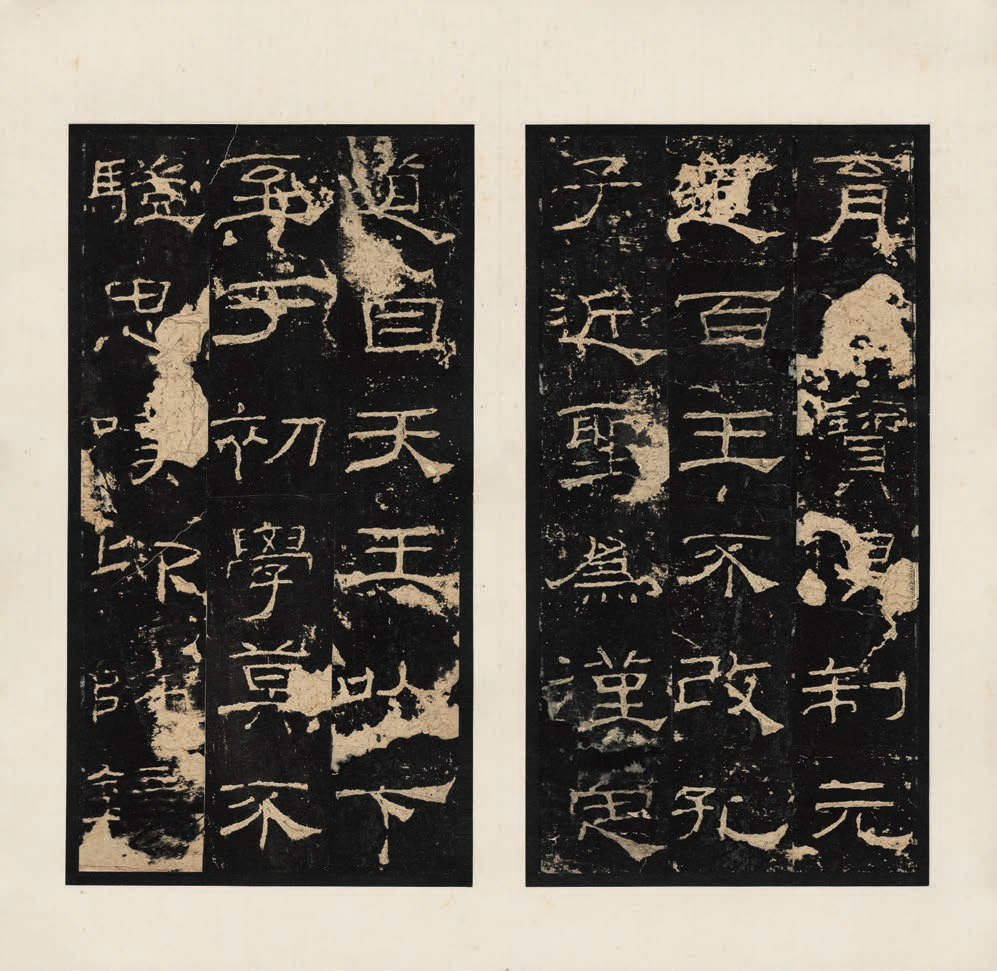
Ritual utensils and stele with shadow (Tao Zhu’s collection)

Ritual utensils and stele with shadow (Tao Zhu’s collection)
Zhongwei said that there are no duplicates of rare books and inscriptions. Numerous rubbings of Ming Dynasty and early Qing Dynasty, such as "Ritual Vessels", "Shi Chen", "Yi Ying" and "Zhang Qian", have been copied, cut, framed, handed down, and sealed. Judging from the seals, inscriptions, and postscripts, none of them are of the same style. So, how to choose exhibits? "Our screening principle is: under the premise of the same transfer time, the first condition is the collection of famous people and the inscriptions and inscriptions of famous people, and the quality of the paper and ink of the transfer is the auxiliary condition. The collection of famous people is the guarantee of the quality and grade of the cultural relics in the collection, and the inscriptions and inscriptions of famous people are the The documentary value and cultural relic value of the collection are reflected. What we value is the cultural added value behind the rare books." "Every selected exhibit is an unforgettable masterpiece and a treasure in the world."

Shi Chenqian's stele (collected by Sun Duoguo)
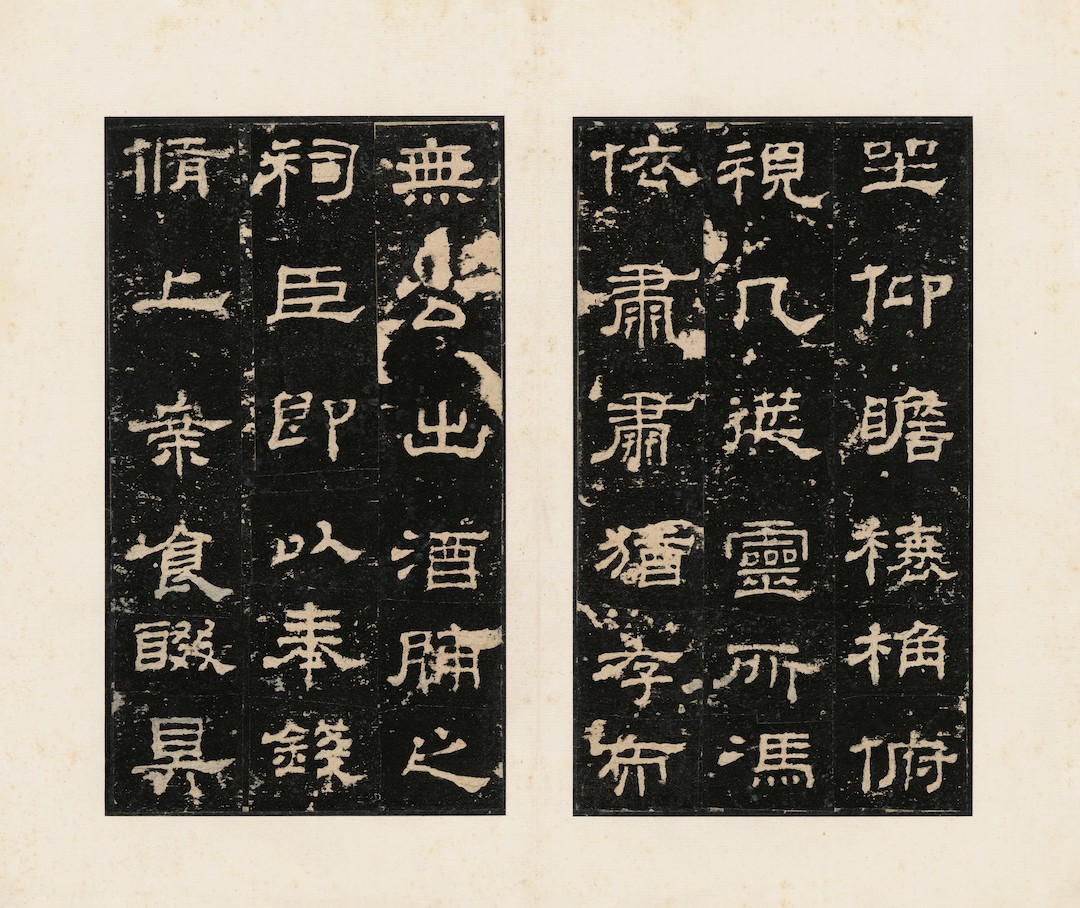
Shi Chenqian's stele (collected by Sun Duoguo)
Zhong Wei said that in order to take into account the rich variety of Han monuments and the ornamental value of the exhibits, selecting high-quality works has become a key task in organizing the exhibition. Many rare books can only be parted, and the best ones will be selected again. The one hundred and fifty-one exhibits included in the catalog of this supporting exhibition, if calculated according to the time of rubbings, are roughly as follows: one rubbing from the Yuan and Ming Dynasties, ten rubbings from the Ming Dynasty, two rubbings from the late Ming and early Qing Dynasties, and two rubbings from the early Qing Dynasty. Thirteen pieces, including 74 rubbings from the mid-Qing Dynasty, 39 rubbings from the late Qing Dynasty, 11 rubbings from the Republic of China, and one rubbing from the People's Republic of China. This configuration takes into account the classic Han steles unearthed in various historical periods.
Due to the differences in the time of transmission and early or late dissemination, rare copies of Han steles and rare copies of Tang steles show different characteristics. Tang steles are treasured with Song rubbings, while Han steles were deeply rooted in people's hearts by the Ming Dynasty. By the middle and late Qing Dynasty, many Han dynasty stone carvings were unearthed. Epigraphy revived after the Qianjia period, and the collection and research of Han steles reached a new height. Therefore, Han steles The early Qing rubbings are extremely rare, the Ming rubbings by Liao Ruochenxing, and the Song rubbings are even more unique. In this exhibition, "Taishi Xique Inscription" (from the collection of Wang Yirong), "Kaimu Temple Stone Que Inscription" (from the collection of Li Baoxun), "Cao Quan Stele" (from the collection of Yu Fu), "Shi Chenhou Stele" (from the collection of He Shaoji), etc. It is a rare book of Ming Dynasty rubbings, with first-class craftsmanship, elegant paper and ink, and extremely high cultural relic value.

"Taishi Xique Inscription" (Collected by Wang Yirong)

Inscription on the stone of Kaimu Temple (original version by Li Baoxun)
Nearly half of the Han stele scrolls in this exhibition are hung on the wall, which is shocking and impressive, allowing the audience to enjoy a cultural feast, which has become a highlight of the exhibition. The entire rubbing restores the original appearance of the inscription, and the number of characters is clear at a glance. Together with the exquisite mounting art and the wonderful inscriptions and inscriptions by celebrities, the viewing is endlessly memorable. For example, "Liu Pingguo Cliff" (collected by Wang Yirong) and "Shananhou Huo Stele" (collected by Pan Zuyin) have a lot of residual words and mottled stone flowers. However, the inscriptions and inscriptions scattered around the rubbings, almost filling the page, seem to be led through history. The long river, in the quaint charm of calligraphy, painting and ink, experience a journey of epigraphy and stone culture.

"The Marquis of Shanan Huo Stele" (Pan Zuyin's Collection)

"The Marquis of Shanan Huo Stele" (Pan Zuyin's Collection)
In order to cooperate with this exhibition, the Shanghai Library has compiled the book "The Great Han Dynasty - An Exhibition of Rare Books on Han Steles Collected by Shanghai Library", which includes 151 kinds of rare books on Han steles, including all exhibits, and will hold a launch ceremony on the day of the opening ceremony. In the afternoon, Shanghai scholars, calligraphers, collectors, etc. were invited to hold a small-scale symposium. This exhibition lasts for 2 months and will last until January 7 next year. During the exhibition, expert lectures will also be held on the weekends from November to December to appreciate the infinite charm of Han stele with readers.
(This article is compiled based on information provided by the organizer)
Further reading:
Preface to "The Heroes of the Han Dynasty - Exhibition of Rare Books on Han Steles Collected by Shanghai Library"
Text/Zhong Wei
The Shanghai Library has a collection of 250,000 epigraphic rubbings, including 3,000 rare books. It is one of the most important public collections of inscriptions and inscriptions at home and abroad. The collection of rare epigraphic and stone tablets and calligraphy is mainly concentrated in several major sections such as Han steles, Tang steles, Song steles, full-shaped bell and tripod rubbings, and epigraphic sketches. Among them, the collection of Song dynasty and Tang dynasty steles, Song and Song dynasty steles, Ming and Han dynasty steles, and old bell and tripod rubbings are among the best. .
Two years ago, we held the "Weather of the Tang Dynasty - An Exhibition of Rare Books on Tang Stele Collection in the Shanghai Library", which attracted widespread attention from society and received unanimous praise from the academic community. The number of visitors to the exhibition exceeded expectations. The success of the exhibition not only made the Shanghai Library's inscription collectors a household name, but also raised more expectations from all walks of life. Based on this, we decided to build the Shanghai Library's inscription exhibition into a cultural brand. Therefore, the Biennial Exhibition of Inscriptions is also in the spotlight. It must be done. This year, we have taken out the rare Han steles with the greatest epigraphic research value and artistic appreciation value among the collection of steles and calligraphy as the theme of this exhibition, in order to carry forward our country's long and glorious traditional culture and show an unprecedented new prosperity.
The Qin and Han Dynasties unified the country, established the territory of China, established the Chinese nation, created the political system, and established academic thought. The teachings of China were established after Confucius; the politics of China were established after Emperor Qin; the territory of China was established after Emperor Wu of Han Dynasty. The Han Dynasty began with the magnificent founding of the country, experienced stability, prosperity, silence, resurgence, and finally fell apart. In this ups and downs of history, the Chinese ancestors created the colorful and unique civilization of the Han Dynasty.

The inscriptions on the portraits of Wu’s ancestral temple (the original edition of Huang Yi’s examination in the first year of Jiaqing’s reign)
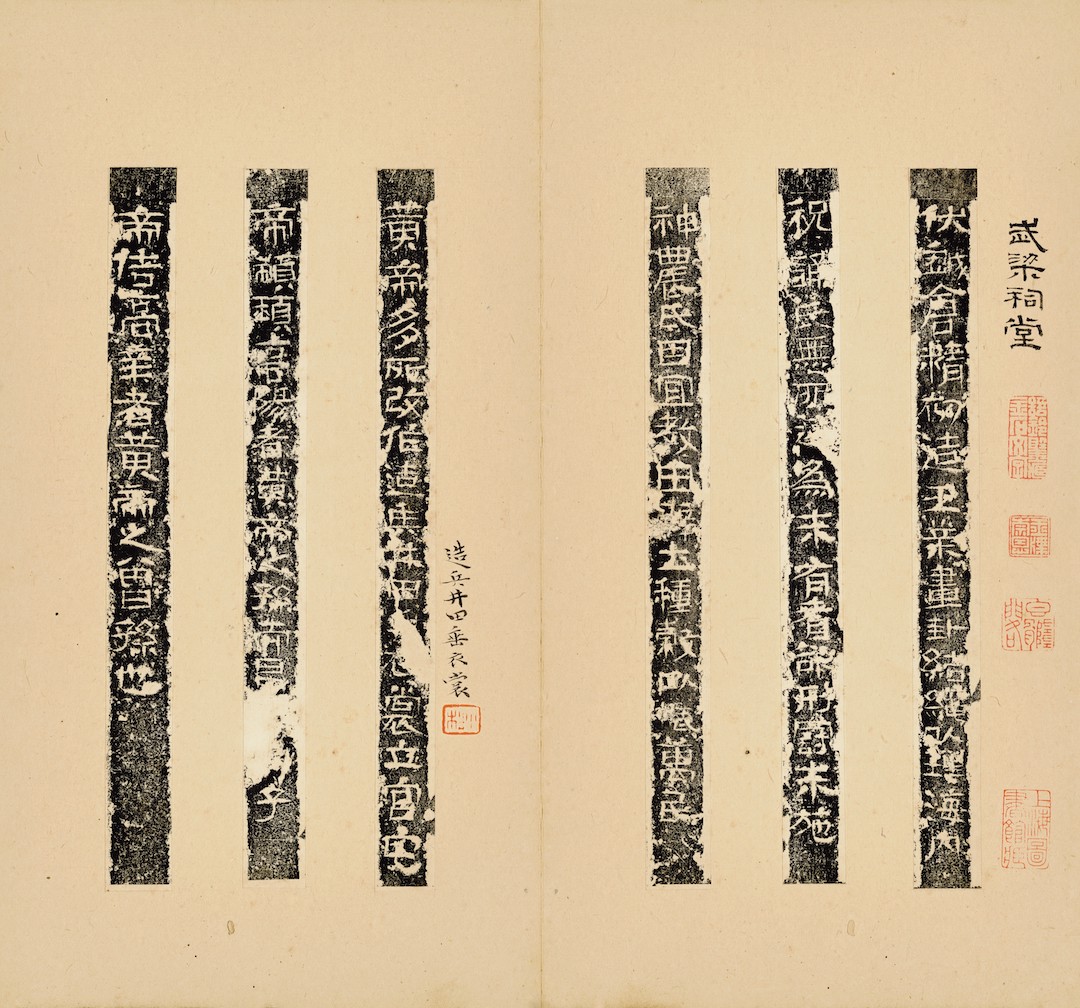
The inscriptions on the portraits of Wu’s ancestral temple (the original edition of Huang Yi’s examination in the first year of Jiaqing’s reign)

The inscriptions on the portraits of Wu’s ancestral temple (the original edition of Huang Yi’s examination in the first year of Jiaqing’s reign)
Very few stone carvings from the Western Han Dynasty have survived. After the Eastern Han Dynasty, stone carvings in praise of virtues were spread all over the counties and cities, and the custom was extremely prosperous. Weathered by wind and rain, wars and wars, and vicissitudes of life, the survival of monuments has its own destiny. More than five hundred years later, Li Daoyuan of the Northern Wei Dynasty still cited more than 350 stone carvings from the Han and Wei dynasties in the "Shui Jing Zhu". More than a thousand years later, only about 180 of the Han Dynasty steles included in the "Inscriptions and Stones" by Zhao Mingcheng of the Song Dynasty remained, and more than half of them were destroyed. More than 1,700 years later, during the Qianjia period of the Qing Dynasty, Wang Chang's "Epigraphy and Stone Collection" and Weng Fanggang's "Epigraphy and Stone Records of the Two Han Dynasties" recorded that there were less than 70 stone inscriptions in the Han Dynasty. Since the revival of epigraphy in the Qianjia Dynasty, the number of new Han steles discovered in Qiulong Cave has increased tenfold than in the past. Some were recorded before the Song Dynasty and reappeared, and some were not seen by the Song Dynasty. However, most of them are fragments of broken steles and portraits. Stone or yellow intestine stone. According to the "Han Shi Cumu" compiled by Wang Yirong and edited by Luo Zhenyu, there are 120 text inscriptions and more than 200 portrait stones.
Han dynasty steles are rich in content. Everything is recorded in stone, no matter how big or small it is. They are all inclusive and exhaustive. The inscriptions include records of personal life, Confucian and Buddhist classics, mountain scriptures and geographical records, and miscellaneous poems. There are works praising the benevolence of gods, records of temples, temples, road construction, etc. The rich historical materials of stone carvings provide a source for later generations of scholars to study epigraphy. The inscriptions and postscripts attached to the Han stele rubbings by famous figures from past dynasties are a major feature of rare inscriptions. The ancient inscriptions and inscriptions include textual research on the system of famous objects, explanations of inscribed texts, corrections of classics and history, identification of forgeries, visits to stele stones, and calligraphy appreciation. He recognizes greatness and learns well.
There are a large number of rubbings of Han steles in the collection, accounting for about one-fifth of the total collection of steles. Among them, the classics of Han steles include: "Shi Chen", "Cao Quan", "Rituals", "Zhang Qian", "Ode to the Stone Gate", "Xing" "Ode to the Pavilion" and so on are richly collected, including rubbings from various historical periods. Faced with the vast collection of Han stele rubbings resources, it is no easy task to organize an exhibition that can fully demonstrate the characteristics of the collection shown above.
First of all, we have to set a goal for this exhibition: not only to show the complete picture of the surviving Han stele rubbings, but also to highlight the key collections; not only to highlight the collection characteristics of the rare Han stele books in the collection, but also to popularize the Han stele culture and art. To achieve this goal, it is required that the exhibits in this exhibition should be large in number, complete in variety, and of high quality. The selection of exhibits is actually our inheritance and development of the traditional values of rare Han steles; the display of exhibits is the export and popularization of these values.
The shape of stele carvings in the Han Dynasty has a distinct trajectory of creation, development and finalization. From the initial uncustomized stone carvings, after one or two hundred years of development, a standardized shape of "stele" with a forehead, a piercing, a body and a base was finally created. "This monument system has been followed by later generations for two thousand years. Therefore, the inscriptions of the Han Dynasty left many shapes and categories, such as: carved stones, tablets, stone towers, cliffs, tablets, stone scriptures, portraits, etc., so the exhibition hall of "The Magnificent Style of the Han Dynasty - Rare Books of Han Stele Collection in Shanghai Library" Space is divided and merged around the shape of the Han stele.
The catalog of this exhibition contains 151 rare volumes of Han steles, covering most of the classics of Han steles. However, it is not the main purpose of our exhibition to show the complete variety of Han stele rubbings and the richness of the rubbings in the collection; it is our greatest wish to organize this exhibition to show the preciousness and scarcity of the Han stele rubbings in the collection and to show the unique cultural connotation of the rare books on inscriptions. Selecting rare masterpieces from the vast collection of resources and selecting exhibits with the most cultural relics and artistic value is the core work of our curatorial work. Our desired goal for this exhibition of rare books on inscriptions and inscriptions is not only to hold a successful exhibition for the Shanghai Library, but to make it a grand event with far-reaching influence in the cultural exhibition circles in Shanghai and even the country. At the same time, we must also set a good example for future generations. It is a benchmark that is difficult to surpass in the exhibition of rare Han monuments.

Li Mengchu's stele (explanatory text by He Shaoji)
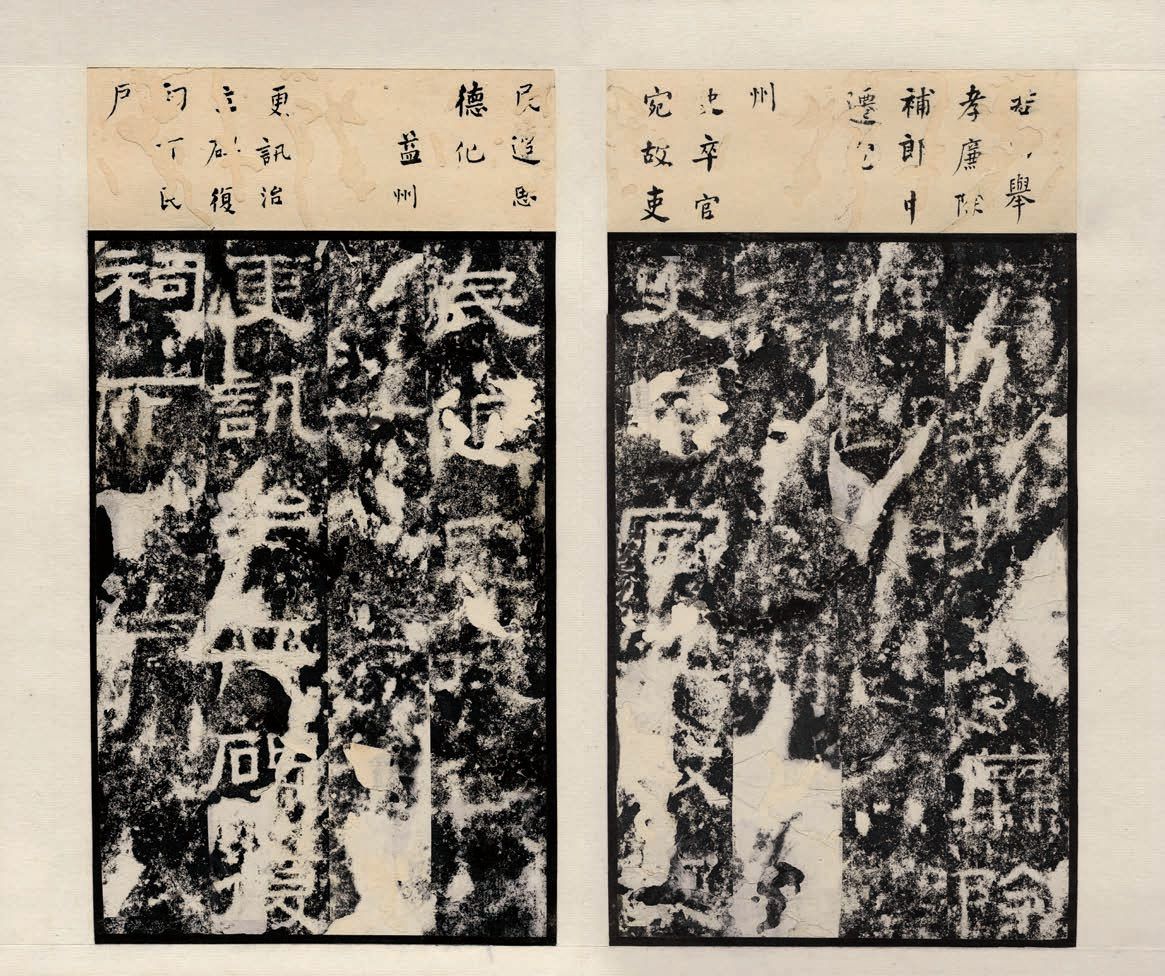
Li Mengchu's stele (explanatory text by He Shaoji)

Li Mengchu's stele (explanatory text by He Shaoji)
There is a big difference in the evaluation standards of rare books on Han steles and rare books on Tang steles, that is, the time of transmission and dissemination is different. Although the Tang stele was produced seven or eight hundred years later than the Han stele, the widespread spread of the Tang stele was two to three hundred years earlier than the Han stele. The Tang stele rubbings were loved by the world in the Song Dynasty and began to be passed down in large numbers. It took until after the Ming Dynasty for the stele to become deeply rooted in the hearts of the people, and there was a strong tendency for latecomers to catch up in its spread and development. Therefore, among the rare Tang steles, the rubbings from the Northern Song Dynasty are the best, and the rubbings from the Southern Song Dynasty are the treasures. Among the rare Han steles, there are only a few that are so ancient that they are truly called Song Tuo. It can be seen from this that the Ming rubbings on the Han stele can be regarded as the best, and their rarity is comparable to the Northern Song Dynasty rubbings on the Tang stele; the early Qing rubbings on the Han stele can be regarded as treasures, and their scarcity is comparable to the Southern Song rubbings on the Tang stele.
Secondly, another characteristic of rare Han steles is that the number of Han steles unearthed before the early Qing Dynasty was limited, and many famous Han steles were gradually rediscovered after the Qian and Jiaqing periods. Therefore, the original rubbings of the late Han stele, even if they are made after Jiadao, as long as the handed down copy is rare, its cultural relic value will far exceed that of the Ming rubbings of the Tang stele, and may even be as valuable as the Ming rubbings of the Han stele. In addition, at the end of the Qing Dynasty and the beginning of the Republic of China, the study of stele became popular, and Han steles were unprecedentedly popular. The newly unearthed Han steles at that time would become the new favorites in the collection of stele and calligraphy, attracting a large number of famous experts to examine and comment on them.
The one hundred and fifty-one exhibits included in this catalogue, if calculated according to the time of rubbings, are roughly as follows: one rubbing from the Yuan and Ming Dynasties, ten rubbings from the Ming Dynasty, two rubbings from the late Ming and early Qing Dynasties, and thirteen rubbings from the early Qing Dynasty. There are seventy-four rubbings from the mid-Qing Dynasty, thirty-nine rubbings from the late Qing Dynasty, eleven rubbings from the Republic of China, and one rubbing from the People's Republic of China. This configuration takes into account the classic Han stele unearthed in various historical periods. The collection of Ming and early Qing rubbings of Han steles is not just a mere 10 or 20 pieces, but we have at least 70 or 80 pieces. However, these early rare books were mostly concentrated on a few famous classics, such as Ritual Vessels, Shi Chen, Yi Ying, Zhang Qian, etc. This phenomenon is just like the Song Dynasty and Tang Dynasty steles that were mostly concentrated on Jiucheng Palace. ”, “Collection of the Holy Religious Prefaces”, “Yu Gonggong”, “Huangfu’s Birthday” and “Lushan Temple”, if we only exhibit Ming rubbings and early Qing rubbings, we will not be able to take into account the richness of Han stele varieties and the ornamental value of the exhibits. Therefore, selecting high-quality works has become a key task in organizing exhibitions. Many rare books can only be given up and the best ones can be selected again.

"The Magnificence of the Han Dynasty—Exhibition of Rare Books on Han Steles Collected by Shanghai Library" is about to be launched
In fact, there are no copies of rare books and inscriptions. Many rare books such as Ritual Vessels, Shi Chen, Yi Ying, and Zhang Qian were made in Ming Dynasty and early Qing Dynasty. Judging from the inscriptions and postscripts, none of them are of the same style. So, how to choose exhibits? Our screening principle is: on the premise of the same transmission time, the first choice is the collection of famous people and the famous inscriptions and postscripts, and the quality of the paper and ink is the auxiliary condition. Collections by famous people are the guarantee of the quality and grade of cultural relics in the collection, and inscriptions by famous people are the embodiment of the documentary value and cultural relic value of the collection. What we value is the cultural added value behind rare books. There are 151 Han Dynasty steles on display this time, including inscriptions, inscriptions, inscriptions, inscriptions, inscriptions, recordings, paintings, etc., for a total of inscribed There were 217 reporters, a total of 353 authentic inscriptions and postscripts, involving 154 famous collectors of inscriptions and inscriptions. Therefore, all the selected exhibits are unforgettable masterpieces and treasures in the world.
Through the mottled stone flowers, you can travel through two thousand years of time and appreciate the beauty of the shape, text, Chinese characters, binding, inscriptions and seals brought by the rare books of Han Dynasty stele. You can feel the prosperity and prosperity of Han stele culture and cherish it. Such a rich treasure left by our predecessors, praising the collection resources of the Shanghai Library, and establishing solid confidence in traditional culture are the original intention and purpose of our exhibition "The Magnificent Heroes of the Han Dynasty".
